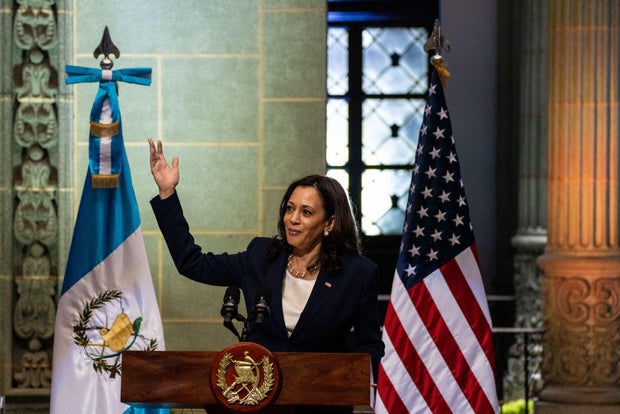After President Biden’s decision to abandon his re-election campaign and endorsing Vice President Kamala Harris as the Democratic presidential nominee, Harris’ role on immigration has come under scrutiny.
Shortly after Mr. Biden’s announcement, Republicans sought to blame Harris for the Biden administration’s woes on the U.S.-Mexico border, where American officials have reported record levels of illegal crossings over the past three years. At telephone conversation with CBS News Friday, former President Donald Trump said Harris presided over “the worst border ever” as “border czar,” a title his Republican detractors often give him.
Harris is sure to face more criticism of the Biden administration’s record on immigration, one of the top concerns of American voters ahead of the election. And Harris has played an immigration-related role in the Biden White House, but his responsibilities on the issue have often been misplaced.
What exactly is Harris’ immigration role?
In March 2021, when the Biden administration faced the initial stages of illegal crossings on the southern border of the US, Mr. Biden assigned Harris to lead the administration’s diplomatic campaign to address the “causes” of migration from Guatemala, Honduras and El. Salvador, including poverty, corruption and violence.
The region, known as Central America’s Northern Triangle, has been one of the main sources of migration to the US-Mexico border over the past decade.
Kent Nishimura/Los Angeles Times via Getty Images
Harris is not being asked to be the administration’s “border tsar” or to oversee immigration policy and enforcement on the US-Mexico border. That is primarily the responsibility of Homeland Security Secretary Alejandro Mayorkas and his department, which oversees the country’s three main immigration agencies, including Customs and Border Protection.
In fact, the only role close to the “border tsar” in the Biden administration was held for a few months by Roberta Jacobson, a long-time diplomat who served as the coordinator for the Southwest border until April 2021.
In her immigration role, Harris’ main focus has been on convincing companies to invest in Central America and promoting democracy and development there through diplomacy. In March of this year, the White House announced that Harris had secured a commitment from the private sector to invest more than $5 billion to improve economic opportunities and reduce violence in the region.
Efforts to reduce migration by improving conditions in migrants’ home countries have always been considered a long-term strategy by US officials. In the “root cause” framework, the Biden administration acknowledged the “systemic change” envisioned for Central America “will take time to achieve.”
Questions about his work on immigration
There are some legitimate questions about Harris’s work on immigration.
Before the COVID-19 pandemic, most non-Mexican migration to the US southern border came from the Northern Triangle. In 2021, the government should focus on migration cases in the country. But migration flows have changed dramatically in recent years. Record numbers of migrants are coming from places outside of Central America, including from countries like Cuba, Colombia, China, Ecuador and Venezuela.
In fiscal year 2023, for example, Border Patrol apprehensions of migrants from Guatemala, Honduras and El Salvador made up 22% of all crossings during that period, down from 41% in fiscal year 2021, government statistics show. However, the government was able to show that illegal crossings at the US southern border by migrants from Guatemala, Honduras and El Salvador have decreased every year since 2021.
While most of her critics are Republicans, Harris’ work on immigration has also drawn criticism from the left. During a visit to Guatemala in June 2021, Harris told those planning to migrate, “Don’t come,” a statement that drew attention from some progressives and advocates for migrants.
As the second-highest-ranking member of the Biden administration, Harris will also face questions about the rate of illegal border crossings reported in 2021, 2022 and 2023. However, those crossings are down this year, reached a three-year low in Juneafter Mr. Biden issued an executive order barring most migrants from asylum.






